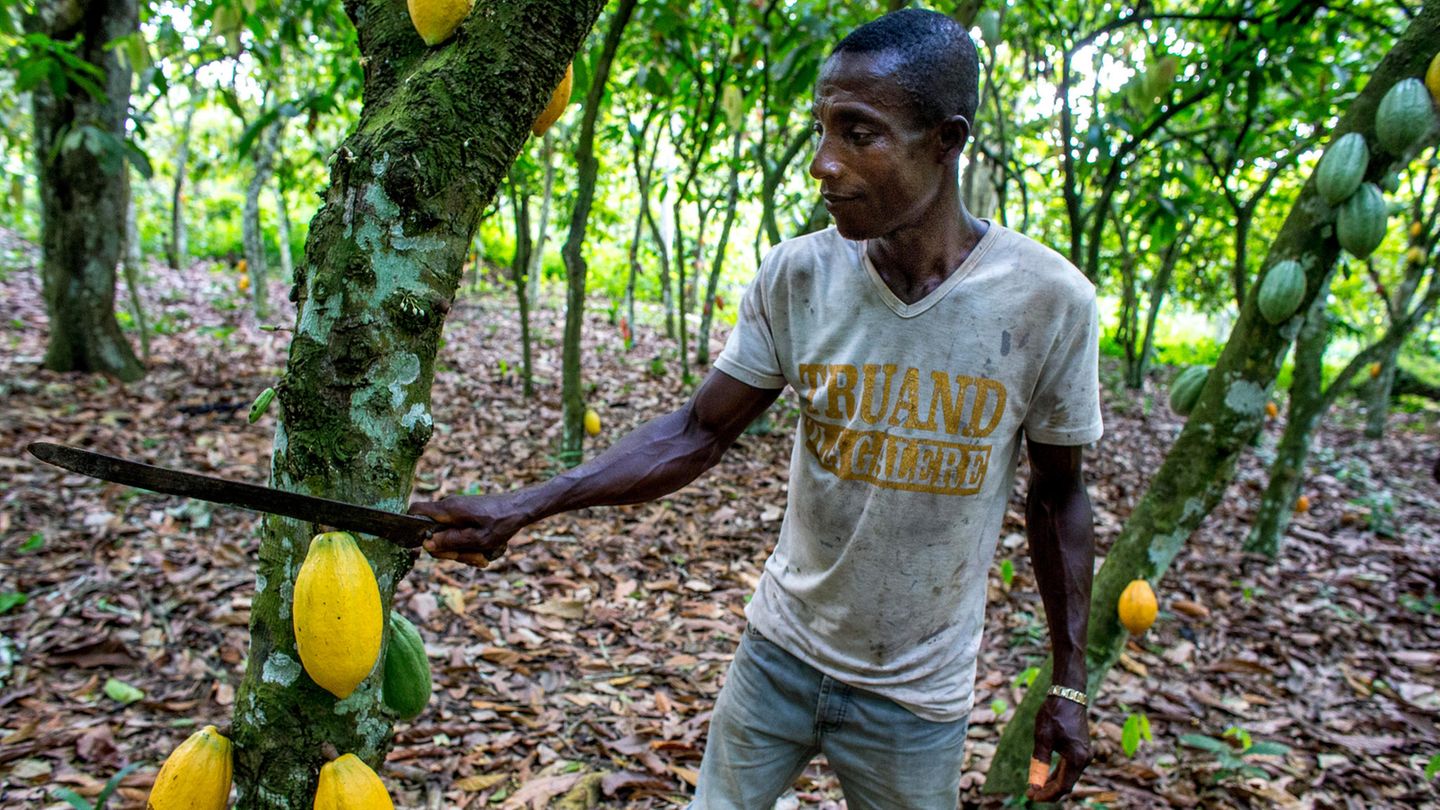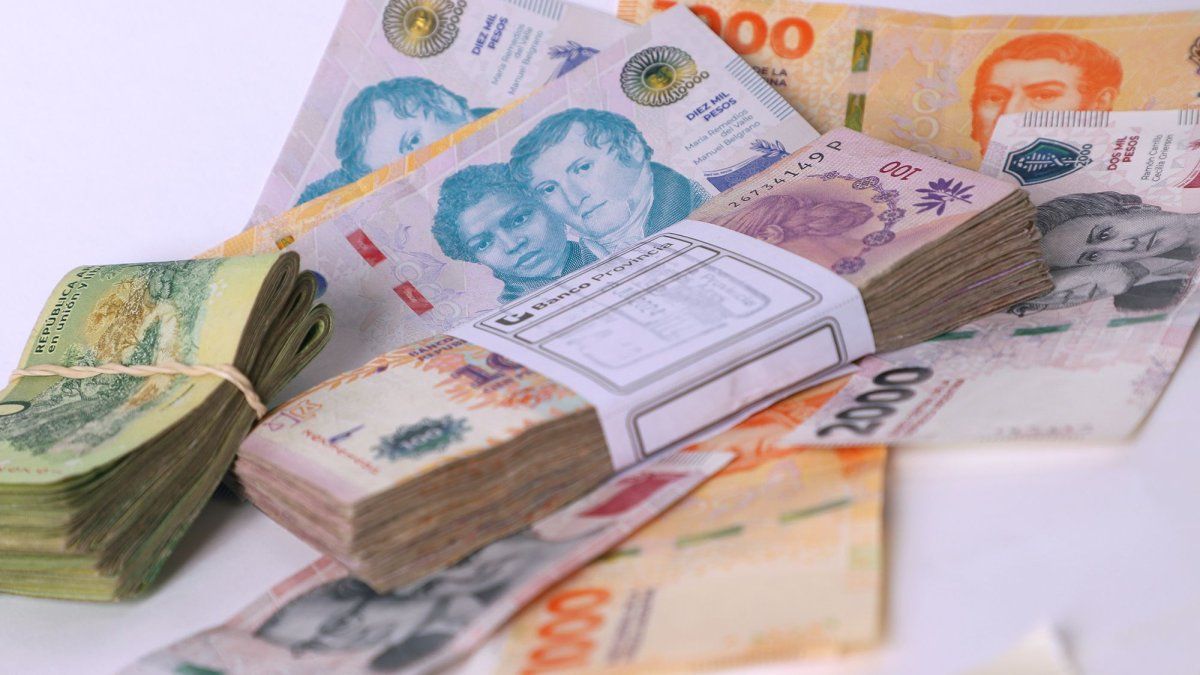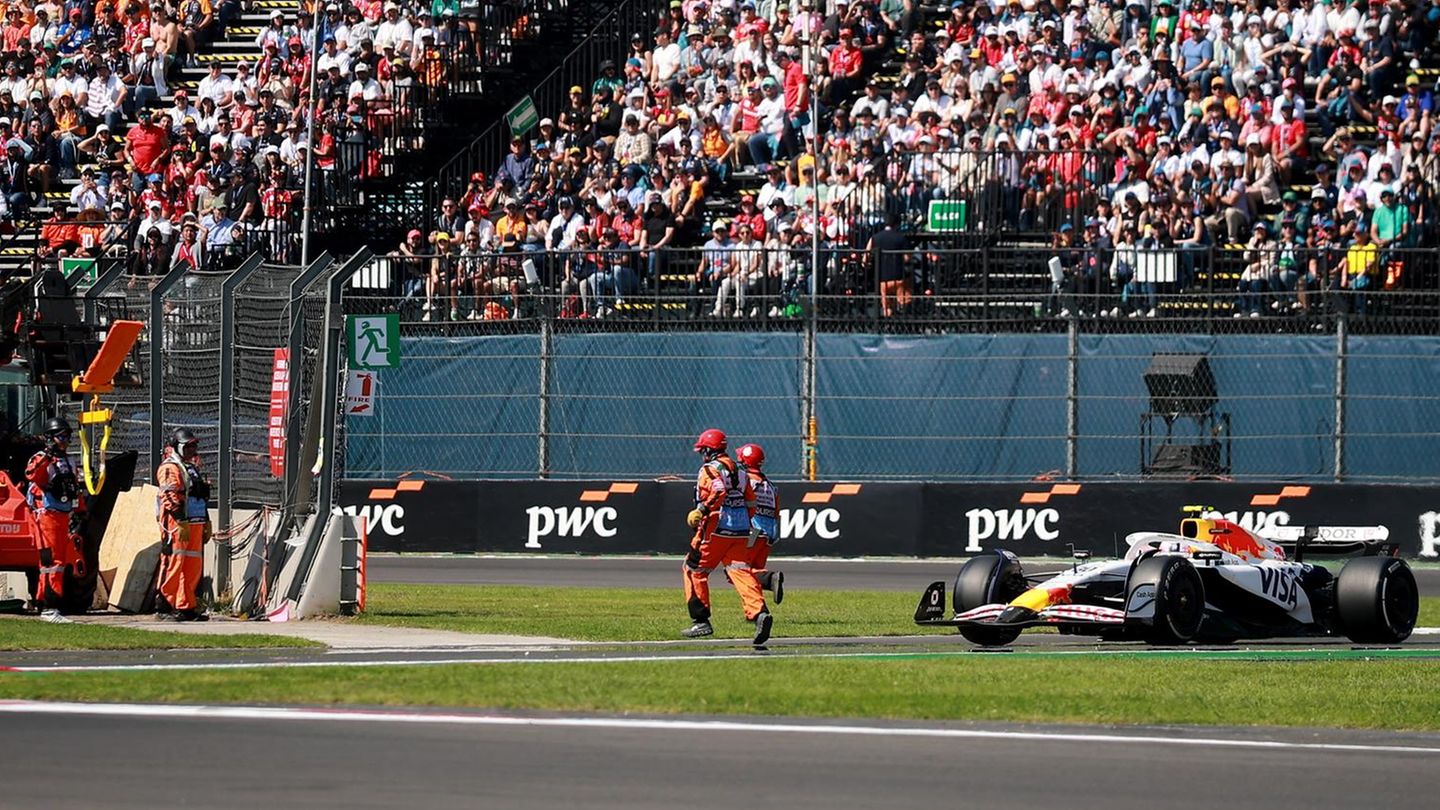Cocoa beans are more expensive than ever. Climate change is to blame. What are the consequences for supermarket shelves?
This is original content from the Capital brand. This article will be available for ten days on stern.de. After that, you will find it exclusively on capital.de. Capital, like the star to RTL Germany.
Since the beginning of 2023, the price of cocoa has climbed to dizzying heights, quadrupling within a year. Then on April 19, 2024, the all-time high was reached: a ton of cocoa beans cost $12,500 on the New York Stock Exchange. The raw material has never been more expensive in history.
Prices have been falling again since April, but the fluctuations remain sharp and the level remains high. By comparison, over the past 20 years candy manufacturers paid between 1,500 and 4,000 US dollars per ton. The anxious question of many manufacturers and chocolate eaters is: Why is cocoa suddenly a luxury item and how long can I still afford chocolate?
Poor harvests, few cultivation areas
The fact that cocoa beans are becoming more expensive is mainly due to climate change. In the main growing areas in the Ivory Coast and Ghana, there were high crop failures due to periods of drought alternating with heavy rain and flooding. Around 70 percent of cocoa beans come from these regions. The wetness is damaging the cocoa trees, they are suffering from fungal diseases and some have died, reports the WWF.
In Ghana, the second most important cocoa producer with a market share of 13 percent, over a third fewer cocoa beans were sold to the authority responsible for marketing between the start of the harvest in September and the end of January this year. Ghana alone needs 2 billion dollars to treat the cocoa plantations plagued by fungal diseases. “Many trees are old and more susceptible to diseases,” says Carsten Fritsch, a commodities expert at Commerzbank. But too little investment was made in new plantations and trees because the price of cocoa was so low.
Bean by bean handcraft
The cocoa harvest is still largely done by hand, with millions of small farmers carefully using a machete to cut off the heavy cocoa fruit, each of which contains only around 30 to 50 grams of beans that can be processed further. Large harvesting machines are rarely used, so the harvest is lengthy and laborious. Due to these conditions, it is difficult to increase supply in the short term.
And due to an EU regulation, it is likely to become even more scarce. From the end of 2024, the import of agricultural products from areas that were cleared after 2020 will be prohibited. This is because it was precisely the illegal deforestation that kept the price of cocoa so low.
Small farmers do not benefit
The record cocoa prices are not reaching the millions of small farmers. Most of them live on the breadline and receive a few hundred dollars a month. Companies like Nestlé and Rittersport now have programs that improve farmers’ incomes if they do not use child labor, for example. But the local governments in Ivory Coast and Ghana set the official prices. The small farmers are guaranteed a low, fixed price.
For the current 2023/24 harvest, for example, farmers in the Ivory Coast will receive just under $1.65 per kilogram, or $1,650 per ton. The current price of cocoa is $7,900 in mid-May. Currently, only about six percent of the price of an average chocolate bar ends up with the farmers. Traders and food companies make the big money from cocoa.
Cocoa shortage worldwide
This year, there will likely be a global shortage of 400,000 tonnes of cocoa, after 99,000 tonnes in 2022/23 and 216,000 tonnes in 2021/22. Stocks compared to consumption would then fall to around 25 percent. It would be the lowest level since the record year of 1977. This will become a cost problem for the confectionery industry: According to the Federal Statistical Office, import prices for cocoa beans and cocoa bean fragments were 73 percent higher in January 2024 than in the previous year. The main buyers of cocoa include the Netherlands with 770,000 tonnes (2022 harvest year) and Germany with around 470,000 tonnes.
The shelves in the supermarket are still full because many companies have long-term contracts with their partners and have increased their stocks early. However, the first consequences of the crisis are already apparent: Last year, several companies, including Barry Callebaut and Hershey, announced job cuts.
Expensive chocolate
Last year, manufacturers mainly processed cocoa, which they had already purchased the previous year at significantly lower prices. Nevertheless, costs for consumers rose: According to an analysis by the “Handelsblatt”, chocolate cost up to 30 percent more in supermarkets in 2023, although this was also due to ingredients such as expensive sugar. In order to mitigate price increases, manufacturers also enter into hedging transactions.
So far, the desire to snack has not diminished. According to the Confectionery Industry Association, German manufacturers increased their chocolate production last year by 1.7 percent to 1.2 million tons.
The extent to which chocolate manufacturers continue to pass on the increased cocoa bean prices is likely to depend on market power and costs. The proportion of cocoa in chocolate varies from manufacturer to manufacturer. At Lindt&Sprüngli, the largest Swiss chocolate manufacturer, the raw material cocoa accounts for around 10 percent of the price. In April 2024, chocolate cost another 12.4 percent more than in the same month last year, according to Destatis.
Chocolate becomes a luxury
The cocoa shortage is unlikely to be a short-lived phenomenon. The WWF cites studies that suggest that production in Africa could fall even more sharply because the majority of the land available for cultivation will be significantly less suitable in the future. For many of the cocoa farmers, who often live in poverty, an important source of income would then disappear.
According to the WWF, other foods such as avocado, coffee, mango, coconut, papaya and bananas may also experience major fluctuations in availability and prices in the future due to climate change. However, the stock market is already speculating on falling prices, as can be seen in the futures contracts, which are pointing downwards. Expensive times are coming for chocolate fans. Because the Nutella solution no longer works. The cream was invented when chocolate was scarce and expensive, while butter and oil were cheap. But this calculation no longer works.
Source: Stern




